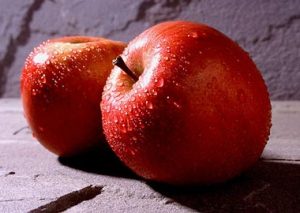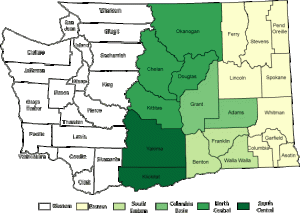This week, we discussed John Dewey’s contributions to American education. He was a big proponent of progressive change, and disagreed with tests of knowledge, high-stakes testing, and short-term learning (Scheuerman, 2014). According to Dewey, it was more important to build an appreciation on lifelong learning in students, instead allowing them to choose their own learning (Scheuerman, 2014). The teacher should let the natural curiosity of their students guide their teaching, and he supported experiential learning (Scheuerman, 2014). For this week’s blog post, I am writing ideas for a week-long project for a group of fourth grade students based on John Dewey’s ideas, with the topic of state geography and incorporating Common Core standards for reading informational text.
Fourth grade is generally the time when students start exploring more of the world around them, including the geography, history, and government of their home state. Assuming I am teaching in Washington state, my class will be learning about the Cascades, the Yakima Valley, the Ring of Fire (there are many options to choose from here), fault lines and tectonic plates, agriculture in Eastern Washington, the Puget Sound, the Olympic Peninsula, and a variety of other interesting and unique geological features. I am also assuming that throughout the year, we are moving through these topics individually, so currently, my class is discussing agriculture in Eastern Washington, including the Yakima Valley, and what makes it ideal for growing the fruit they are famous for. This unit will be about incorporating research from informational texts, analyzing and interpreting visual, oral, or quantitative information, and determining the sequence of events in an informational text.
At the beginning of the week, I would introduce the topic. Since Dewey didn’t think the teacher should be giving the children information, instead letting them experience knowledge on their own, my introduction would cover basics. This would be enough to give an overview of possible topics on Eastern Washington Agriculture, such as the rain shadow, the climate, the soil composition, or types of fruit that thrive in the region. During this time, I would also bring up our topic question: what makes Eastern Washington ideal for agriculture? Once my introduction is over, the students would then take a “field trip” to the library, where we would be able to use library resources (including computers, if they have them) to find articles, books, and other sources of information (approved by teacher or librarian) about one of the many subjects available to them involving agriculture. This gives the students the ability to choose their own learning, while at the same time they are aligning their choices with subjects that need to be taught in 4th grade. Each student would need to find at least two texts about their subject. This could be sped up by having the librarian help find specific books and articles before hand, or I could find them myself, but I also think it is important for the students to learn how to find the information for themselves.
The next few days will be spent working on reading and analyzing the texts that the students found. Common Core standard CCSS.ELA-LITERACY.RI.4.9 states that students should be able to “integrate information from two texts on the same topic in order to write or speak about the subject knowledgeably” (Common Core State Standards Initiative, 2014). Students could discuss their subjects in groups, sharing their information as they find it, or they could journal about it. I would ask guiding questions, and in particular emphasize that we are learning about why their subject contributes to our overall theme (what makes Eastern Washington ideal for growing fruit). Students would search for key ideas and themes related to this question, and would be learning how to “explain events, procedures, ideas, or concepts in a historical, scientific, or technical text, including what happened and why, based on specific information in the text” (CCSSI, 2014), as stated by standard CCSS.ELA-LITERACY.RI.4.3. They would also be spending time interpreting graphic information and statistics, which would then be incorporated into their final projects. This fulfills the standard CCSS.ELA-LITERACY.RI.4.7, which states that students can “interpret information presented visually, orally, or quantitatively (e.g., in charts, graphs, diagrams, time lines, animations, or interactive elements on Web pages) and explain how the information contributes to an understanding of the text in which it appears” (CCSSI, 2014). If there is time, I would also include a short documentary video about agriculture in Eastern Washington. Afterward, we would (as a class), list some interesting facts that might help us in our project while practicing interpreting oral and visual information.
During the final day of the project, students would present their findings to the class, including what they studied, why it makes Eastern Washington an ideal place for growing fruit. After listening to several students’ projects, as a class we would create a poster (or some other form of visual media) describing a variety of reasons for agriculture to be popular in Eastern Washington, again using several (secondary) sources to form knowledge about a specific subject.
I would like to point out that while John Dewey’s ideas of progressive change have recently hit a setback (Scheuerman, 2014), I don’t think that this means his ideas can’t be incorporated into the classroom. The Common Core standards can still be taught while allowing children the freedom of choice. During this unit, the class had a chance to choose the direction of their learning, all the while gaining valuable skills in analyzing texts and visuals, synthesizing their findings and sharing them, and look for key ideas within a text to answer a question they may have about a subject. I think if these kinds of processes are practiced throughout the year, students will have a pretty good grasp on them by the time they head to 5th grade. And while they may not remember exact facts about the rain shadow in the Yakima Valley, they will have at least gained some valuable skills.
Scheuerman, R. (2014). Progressivism and intellectual development [PDF document]. Retrieved from http://mountainlightschool.files.wordpress.com/2010/05/session-8-progressivism1.pdf
Common Core State Standards Initiative (2014). English language arts standards: Reading: Informational text: Grade four. Retrieved from http://www.corestandards.org/ELA-Literacy/RI/4/


One thought on “Teaching a Lesson Based on Principles of John Dewey”